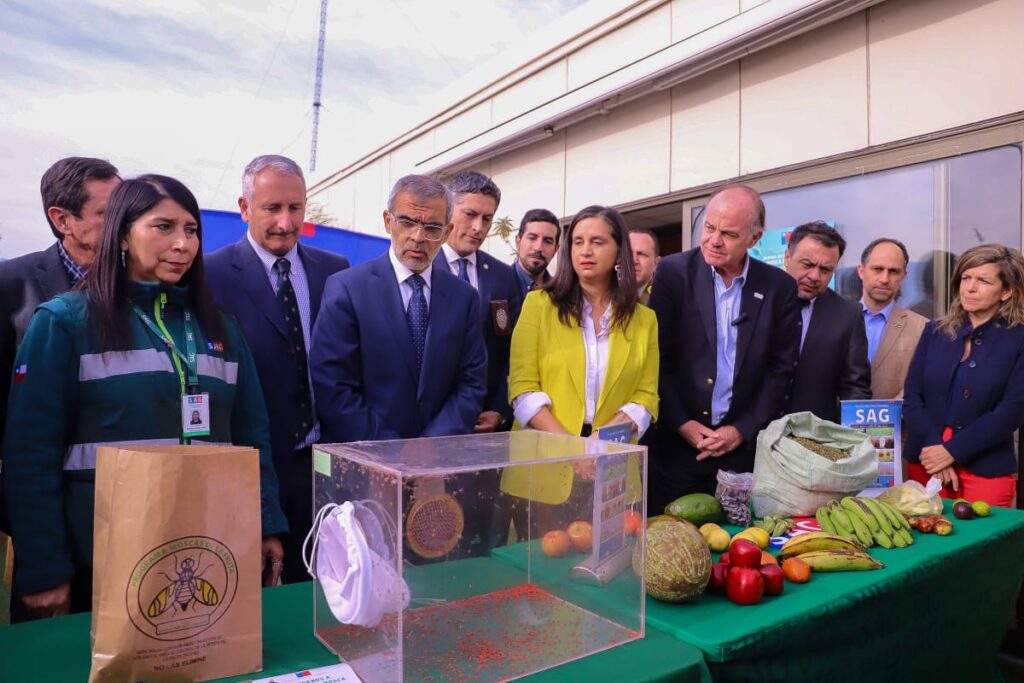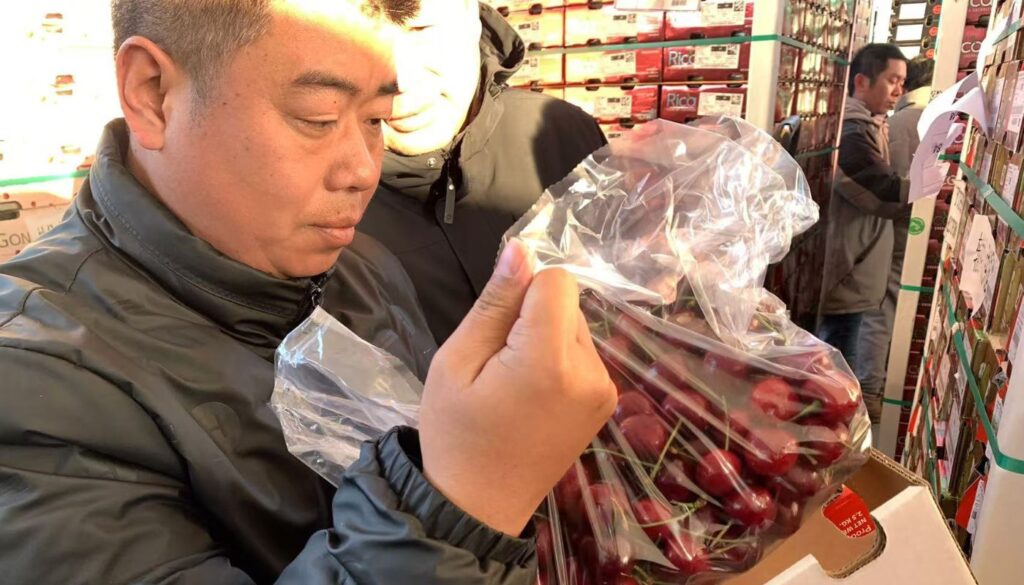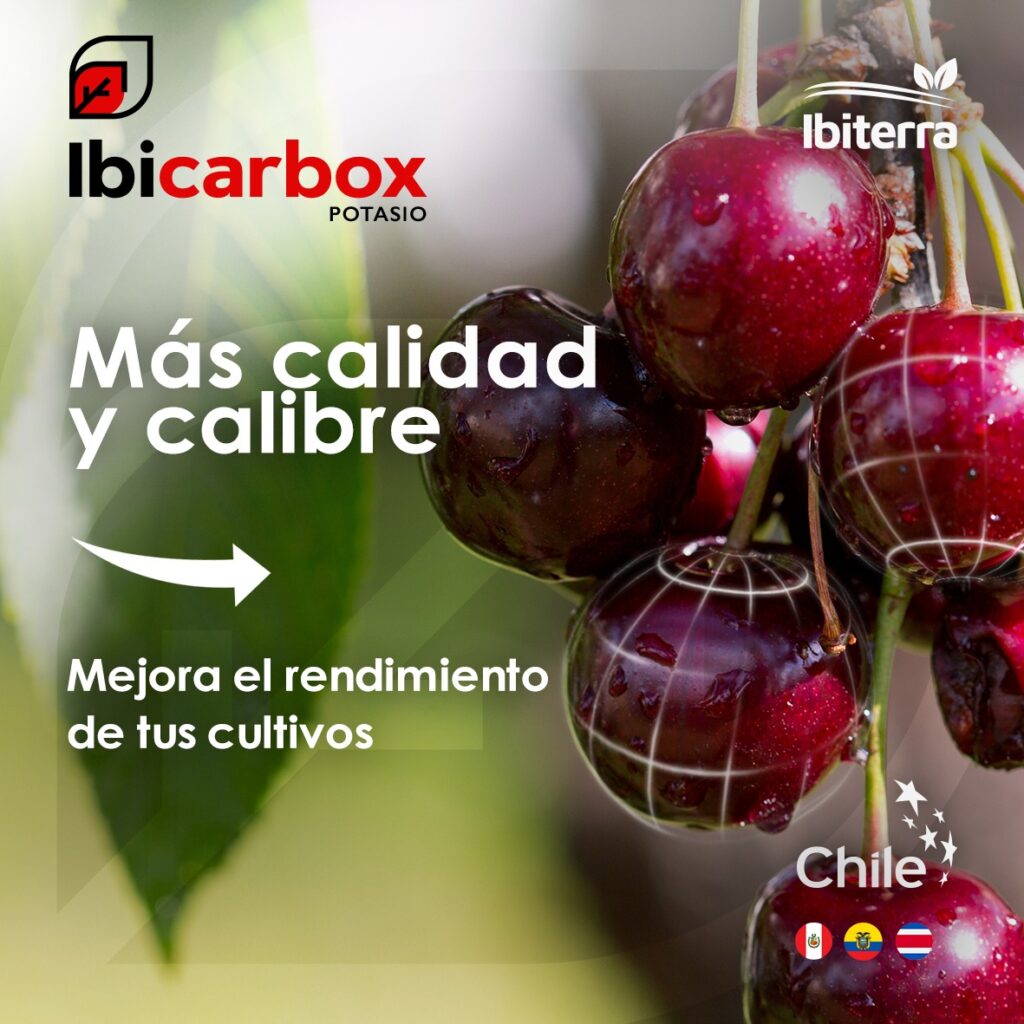This Agroclimatological report has two objectives:
1.- Analysis of agroclimatic conditions during June.
2.- Projections for the month of July. Current evolution of El Niño/La Niña events
Heavy rain conditions characterized the month of June.
Frontal systems during June, associated with atmospheric rivers, significantly raised temperatures.
rainfall amounts, compared to what happened in May. The month ended between 285.0 and 316.0
millimetres. In addition to this, there was snowfall in Maule, which reached around 2.7 metres;
even in some mountain areas it reached 3.0 meters. Regarding the reservoirs, in
On average, the Maule region has 65% of stored water. This predicts a positive
water support for the 2024-2025 irrigation season, compared to last year. Even so,
This resource must continue to be taken care of in its application.
Chart 1. Minimum temperatures recorded in May (purple line), June (blue line) and early June (red line).

The month of May was deficient in rainfall; only 72.8 millimeters were recorded in Curicó. However,
In June, rainfall totaled 290.4 mm. This was directly related to the accumulation of
cold hours. In graph 1 it can be observed that in May (purple line), until the 24th, the temperatures
Minimum temperatures were low, associated with frosts caused by polar air masses. This contributed to a
Accumulation of cold hours of 339.0 hours throughout the month. June, on the other hand, with cloudy skies
and the rains contributed to a low accumulation of cold hours: 206.0 HF. Between May and June,
They count 545.0 cold hours. The good news is that July started very cold (red line), with
frost and absence of rain. The above predicts a positive accumulation of cold hours for
this month.
Evolution of the La Niña event 2024

The graph shows the evolution of the cold event La Niña in the second half of the year.
2024, according to the National Oceanic and Atmospheric Administration (NOAA). It shows that the event
warm and rainy El Niño ended (red bars). The appearance of the cold La Niña event (deficient in
rain and colder temperatures) are indicated with percentages. There is a 75% chance that
starts between August and September. However, it rises to 85% that is present during the
spring-summer (blue bars). Currently, in July, we are in a neutral situation (blue bar).
If this probabilistic model meets its forecast, a winter term is expected
(July-August) with less rain and an increase in days with frost. On the other hand, in spring the conditions
that would prevail are: risk of late frosts, especially in September and probably
first weeks of October. Fall in monthly rainfall values. Greater amount of
clear skies and high levels of solar radiation (due to the lower presence of clouds). However,
During spring La Niña events in previous years, some local rainfall is often recorded,
associated with hail-bearing clouds (cumulonimbus), this risk could be present until
October.
Therefore, in this phase change from a warm and rainy El Niño event, which lasted from
June 2023 to June 2024, to a cold and rain-deficient opposite event, such as La Niña,
They must continue with monthly monitoring, as the atmosphere becomes unstable and can
manifest with extreme events, in spring, both thermal and showers.










